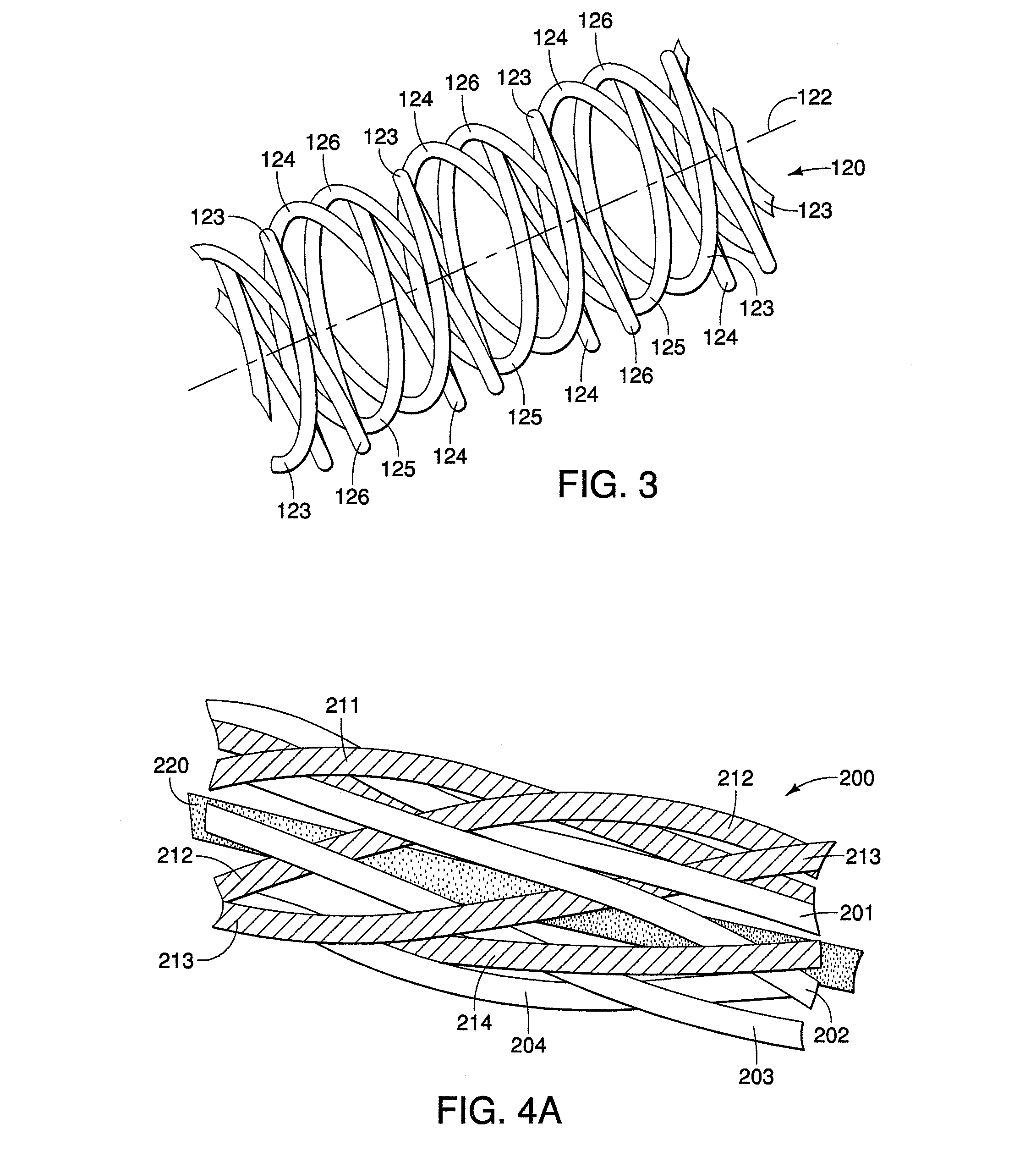Braided Electrical Lead
a technology of electrical leads and wires, applied in the field of medical electrical leads, can solve the problems of small cross section, inability to push, and is typically very floppy and not pushable, and achieve the effect of reducing the risk of injury, reducing the life of the flexor, and reducing the flexor
- Summary
- Abstract
- Description
- Claims
- Application Information
AI Technical Summary
Benefits of technology
Problems solved by technology
Method used
Image
Examples
Embodiment Construction
[0026]FIG. 1 illustrates a neurological stimulation lead 20, similar is some aspects, to the lead illustrated in U.S. Patent Application Pub. No. 2005 / 0021119, herein incorporated by reference. Lead 20 can incorporate a multi-conductor cable according to the present invention. Lead 20 has a distal region 24, a proximal region 26, and an intermediate region 28 disposed between the distal and proximal regions. In a preferred embodiment, the intermediate region is between the innermost distal and proximal electrical contacts described below. A stylet entrance or insertion port 42 is provided in the intermediate region 28. In other embodiments, the stylet entrance may be absent or lie in the proximal end. Lead 20 can be formed of a body or shaft 34 extending between a distal end 30 and a proximal end 32. Lead body 34 has an exterior surface or tubular side wall 36 and is preferably formed of a polymeric material, for example, polyurethane or silicone.
[0027]Lead distal region 24 may incl...
PUM
 Login to View More
Login to View More Abstract
Description
Claims
Application Information
 Login to View More
Login to View More - R&D
- Intellectual Property
- Life Sciences
- Materials
- Tech Scout
- Unparalleled Data Quality
- Higher Quality Content
- 60% Fewer Hallucinations
Browse by: Latest US Patents, China's latest patents, Technical Efficacy Thesaurus, Application Domain, Technology Topic, Popular Technical Reports.
© 2025 PatSnap. All rights reserved.Legal|Privacy policy|Modern Slavery Act Transparency Statement|Sitemap|About US| Contact US: help@patsnap.com



